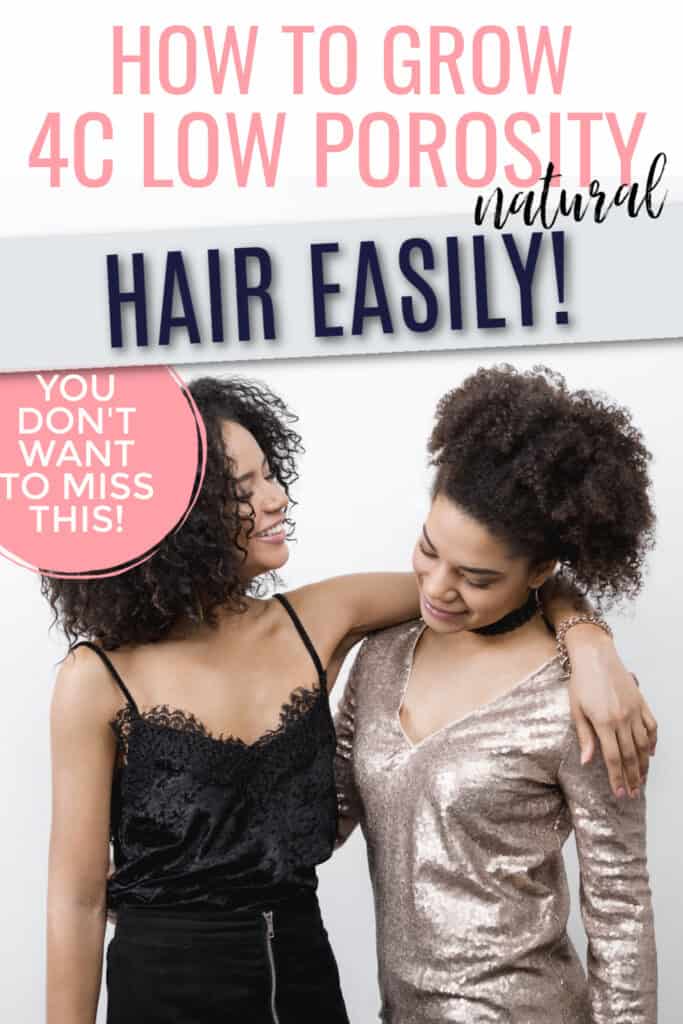Understanding Low Porosity Hair
I’ve always been intrigued by the way my hair behaves. It led me to discover that I have low porosity hair, which, in essence, means my hair struggles to absorb and retain moisture. Moisture retention is a real issue for many of us with natural hair.
Products tend to sit on my hair rather than being absorbed which leads to buildup and dry hair. Understanding the porosity of my hair became the cornerstone of my hair care routine. I suddenly realised that your hair type does not account for what your hair needs and wants.
It’s important to find out if you have low, normal or high porosity hair. You can find out by doing the float test.
Dealing with low porosity hair requires a unique approach. It was clear that I needed a method that would work for my hair and that not just any product would work unless I had the right approach.
I had to find products that didn’t just coat my hair strands but would actually penetrate the outer layer of my hair shaft. It took some trial and error, but I soon realised this was what I needed to figure out if I wanted to walk that path of having healthier hair.
Key Takeaways on how to grow low porosity 4c hair:
- Understanding hair porosity is crucial for effectively caring for your hair.
- Low porosity hair faces challenges with moisture absorption and is prone to product buildup.
- Finding the right products is essential for managing low porosity hair and promoting hair health.
***Please note that this site uses affiliate links if you would like to read the legal stuff you can find it here

Moisture and Hydration Tactics For Low Porosity 4C Hair
I learned the hard way that moisture is king for low porosity hair. My endless quest for length was halted by breakage until I shifted my focus to hydration. By introducing the L.O.C method (liquid, oil, cream) into my routine, things started to turn around for my hair.
This approach layers hydration and seals it in, combating the common issue of products merely sitting on my hair rather than being absorbed.
I’d suggest using lightweight oils such as argan oil, jojoba oil, and coconut oil as well as water-based moisturisers. Hair oils like this are perfect for low porosity hair over heavy oils.
This method and the combination of light oils really can turn your once brittle mane into a hydrated cascade of curls resulting in healthy hair.
Clarifying and Preventing Product Build-up
I discovered the hard way that product buildup can sabotage hair growth. It accumulates silently, clogging the pores on our scalp and cuticle layer rendering the most hydrating products ineffective.
I understood this after months of frustration, wondering why my low porosity hair refused to flourish. It dawned on me that without a clean canvas, nothing penetrates, and hydration becomes a far-fetched dream.
Incorporating a good clarifying shampoo like this one into my routine emerged as a game-changer. I found that using one periodically could strip away the unwanted residue without stripping my hair of its natural oils.
This critical step redefined my hair care process. Proper washing techniques further ensured that my scalp remained free of buildup. Things such as washing my hair with warm water, doing an apple cider vinegar rinse and giving my hair a final rinse with cold water were all things that fostered an environment where my low porosity hair could not only grow but thrive.
Protein treatments also helped as well. Protein treatments helped to strengthen my hair which in turn helped to prevent breakage. If you are going to incorporate protein treatments you should do them according to the needs of your hair. It’s not something that should be done every time you wash your hair.
You can read more about protein treatments here.
The Role of Protective Styles and Scalp Care
I have found that embracing protective styles played a pivotal role in my journey to longer, healthier hair. These styles, be it braids, twists, or updos, notably reduce damage by keeping my ends tucked away and safe from the elements. They proved instrumental in preserving my strands from breakage and split ends, which can halt growth.
Beyond this, a thriving scalp lays the foundation for robust hair growth. I incorporated natural ingredients like tea tree oil and peppermint into my scalp care regimen, which revitalised my scalp.
Also, I discovered that sleeping on silk or satin pillowcases, made a huge difference in protecting my hair. These smooth surfaces prevented my hair from rubbing against harsh materials, thereby preserving moisture and avoiding unnecessary breakage.
This simple switch helped maintain the integrity of my protective styles longer, contributing immensely to retaining length and promoting overall hair health.
Routine maintenance played a pivotal role. Regular trims got rid of split ends before they could cause further damage. Weekly deep conditioning sessions replenished moisture. This is a really good deep conditioner to try on wash day.
A few other small changes that helped my hair was to incorporate things like a rice water rinse, and using a heat cap or shower cap to help open up my hair cuticles so that moisture could penetrate more easily.
Final Thoughts on How To Grow Low Porosity 4C Hair
Nurturing low-porosity hair has been a journey for me, one that transformed frustration into fulfilment. I’ve learned that unlocking my hair’s growth potential hinges on understanding and catering to its unique needs.
Tight cuticles might deter moisture, but with the right approach, these barriers can be gently coaxed open. Embracing this knowledge led me to recognise hydration isn’t just a step—it’s the foundation of thriving, lengthier locks.
Switching to clarifying shampoos freed my hair from stubborn buildup, and incorporating moisture-rich products, like Mielle Organics’ Pomegranate & Honey Detangling Conditioner, transformed its texture and elasticity.
However, the most profound growth sprouted not just from what I applied externally but how I nurtured my body internally. A balanced diet, rich in vitamins, paired with specific supplements, laid a stronger foundation for hair growth.
Related posts:
The characteristics of low porosity hair
Why aloe vera is perfect for your hair
5 Low porosity hair care tips you need to know

 >
>
